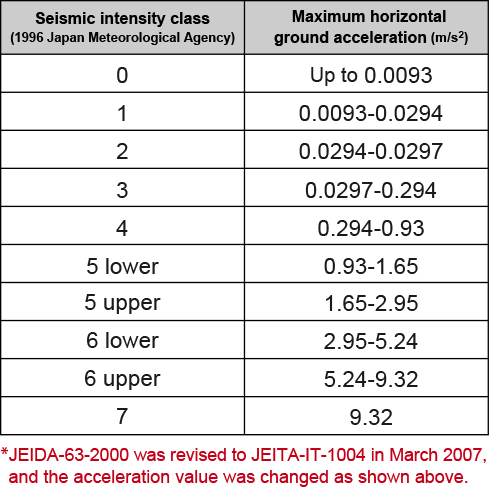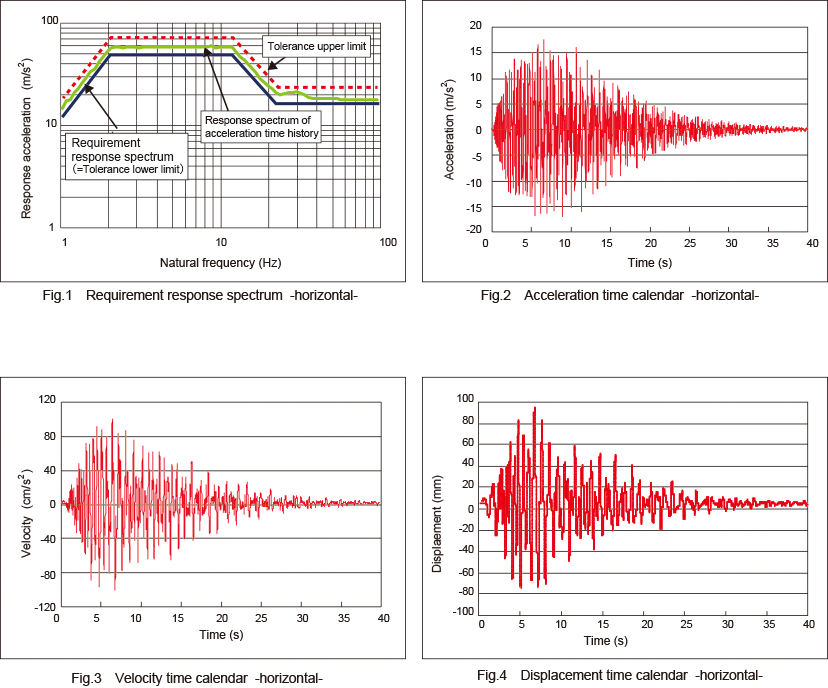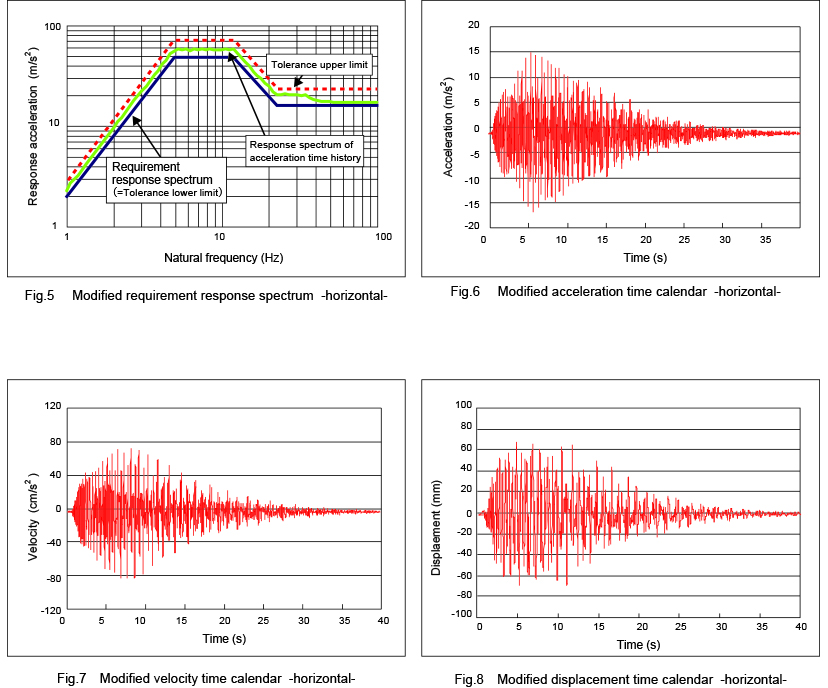Examples of seismic resistance test of telecommunication equipment against large-scale earthquakes
Test overview
■ Requirement
Ensure that the building can withstand an earthquake equivalent to intensity 7 (minimum value).
■ EUT
Communications equipment enclosure 560 × 500 × 1800 mm, 150 kg
■Applicable standard
JIS C 60068-3-3 Environmental test methods – Electrical and electronics – Guidelines for seismic test methods for equipment, JIS C 60068-2-57 Environmental test methods – Electrical and electronics – Time-calendar vibration test methods.
■Outline of determination of test conditions
- Surface acceleration: 7.9 m/s2 was obtained by selecting from the table the surface acceleration corresponding to seismic intensity 7.
The seismic intensity scale of the JMA was revised in 1996 with the introduction of measured seismic intensity. Although the previous seismic intensity classes could easily correspond to surface acceleration, the introduction of measured seismic intensity no longer allows surface acceleration to be easily calculated. This is due to the complex relationship between the frequency distribution of acceleration and duration.
The results of calculations based on the assumption of these relationships in general earthquakes are [JEITA-IT-1004 Industrial Information Processing and Control Equipment Installation Environment Standards Issued by Japan Electronics and Information Technology Industries Association].
The table shown below summarizes the values of this calculation result and is used in our laboratory. - Test acceleration: According to JIS C 60068-3-3, double the ground acceleration is taken as the horizontal test acceleration, and the vertical acceleration is taken as 1/2.
Note: Usually, the vibration of the floor of the upper floor of the building is about twice that of the ground surface. - Axis of excitation: test in each axis.
- Test duration: 40 s.
- Requirement shape of response spectrum: Appendix 3 of JIS C 60068-2-57 is applied.
■Summary of Test Condition Determination
An acceleration timetable (Fig. 2) satisfying the requirement response spectrum (Fig. 1) was prepared, and its velocity timetable (Fig. 3) and displacement timetable (Fig. 4) were determined, indicating that a testing system capable of 180 mmp-p displacement was required. The response spectrum of the acceleration time calendar in Fig. 1 is the response spectrum obtained from the Fig. 2 data and confirms that the acceleration time calendar satisfying the requirement response spectrum is correct.
After confirming with the customer that the telecommunications equipment is fixed with anchor bolts, that the test is not to check whether the EUT moves or falls over during an earthquake, and that the test is not to check whether drawers and the like inside the telecommunications equipment slide out during an earthquake, it was decided to modify the test by cutting the low-frequency component.
It was decided to modify the test to cut out the low-frequency component. The requirement response spectrum was also modified (Fig. 5), an acceleration time calendar (Fig. 6) was created to satisfy this, its velocity time calendar (Fig. 7) and displacement time calendar (Fig. 8) were obtained, and the test was conducted after confirming that it was within the rating of the testing system.
Seismic intensity class/Maximum horizontal ground acceleration

Fig. 1: Requirement response spectrum/ Fig. 2: Acceleration time calendar/ Fig. 3: Velocity time calendar/ Fig. 4: Displacement time calendar

Fig. 5 Modified demand response spectrum/ Fig. 6 Modified acceleration time calendar / Fig. 7 Modified velocity time calendar / Fig. 8 Modified displacement time calendar

Memo
Facilities used
Vibration test system with slip table: i260/SA7M/HT10
Vibration controller: K2, 12in 1out, software SRS
Accelerometers: VP-32 × 12 pcs.
Head expander: TBV-1200-170
Dedicated fixture: adaptor plate 40 kg.
Test time/Working hours
4 hours/one day

